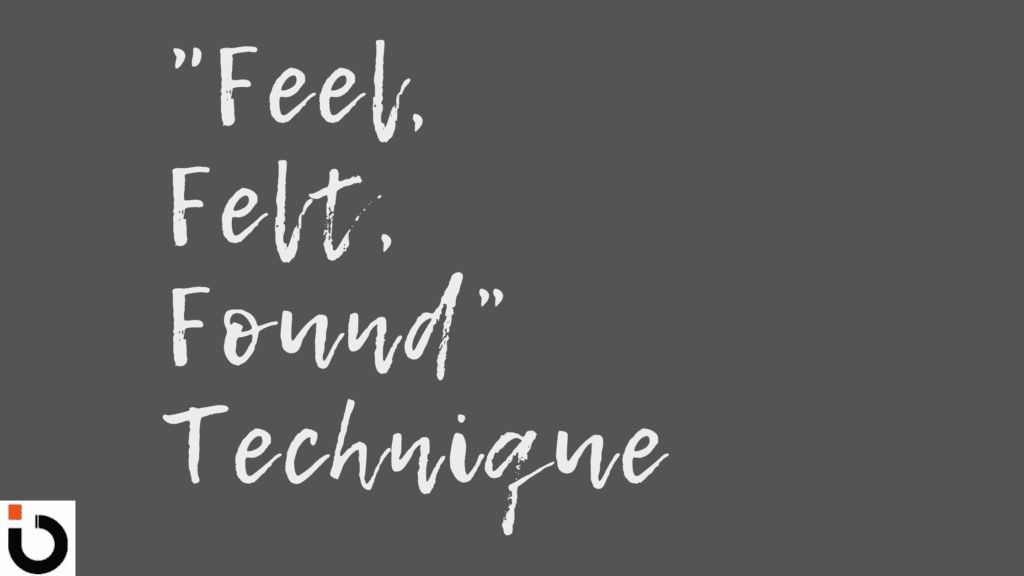Closing a sale is one of the most crucial steps in the sales process, and I know how challenging it can be. The right Sales Closing Techniques can make all the difference between sealing the deal and losing a potential customer. In this blog, I’ll share 10 tried and tested strategies that have helped sales professionals boost conversions and drive business growth.
Table of Contents
ToggleWhat Are Sales Closing Techniques?
In simple terms, sales closing techniques are the strategies and methods used to persuade a potential customer to take the final step of purchasing your product or service. These techniques are designed to help sales professionals overcome objections and seal the deal.
Why Are Sales Closing Techniques Important?
Sales closing techniques are crucial for any business that wants to succeed. Without effective sales techniques, even the best products or services can remain unsold. This is why every successful business invests in training its sales teams on these techniques and strategies. By mastering these techniques, your sales team can increase their chances of success and in turn, boost your business.
The importance of sales closing techniques cannot be overstated, especially in today’s highly competitive marketplace. Customers have more options than ever before, and it’s up to sales teams to convince them that your product or service is the best choice. By understanding and utilizing the right sales closing techniques, you can increase your chances of success and take your business to new heights.

Sales Closing Techniques | Selling Techniques
Closing a deal can be challenging for any business owner or salesperson. While some clients are easy to persuade, others may need a little more convincing before they’re willing to commit. The art of sales is about more than just convincing a client to purchase a product or service; it’s about building trust and rapport with them. As a result, effective sales closing techniques are crucial to the success of any business.
In this post, we will explore 10 tried and tested sales closing techniques that are sure to help boost your business. From the assumptive close to the puppy dog close, we’ll cover all the techniques that have been proven to be effective in closing deals. Whether you’re a seasoned salesperson or new to the game, this guide will provide you with the tools you need to take your sales to the next level.
10 Sales Closing Techniques
Sales closing techniques can be valuable tools to boost your business, but it’s essential to use them ethically and effectively. The 10 most common sales closing techniques are:
- Assumptive Close
- Trial Close
- Urgency Close
- Objection Handling
- Summary Close
- Puppy Dog Close
- Alternative Close
- Takeaway Close
- Silent Close
- Emotional Close
1. Assumptive Close
Assume the sale is already made by using phrases like “When would you like delivery?” or “How will you be paying for this?” The “assumptive close” technique is one of the most effective ways to close a deal. This technique is all about assuming the sale has already been made and moving forward with the final steps. For example, instead of asking the customer if they would like to make the purchase, you would assume that they are ready and ask them how they would like to pay.
This technique is particularly effective when the customer has shown signs of interest and has given positive feedback. By using the assumptive close, you are essentially giving the customer an opportunity to back out if they are not ready to make the purchase. This can be done by asking questions such as “Would you like me to wrap that up for you?” or “How would you like to receive your purchase?”.
It’s important to use this technique in a confident and natural manner. You don’t want to come across as pushy or aggressive. Instead, use open-ended questions to guide the conversation towards the final sale. If the customer is not ready to make the purchase, it’s important to remain respectful and offer to answer any questions they may have. By using the assumptive close technique, you’ll be able to close more deals and boost your business.
2. Trial Close
A Trial Close is a powerful technique that helps you assess a prospect’s interest without pressuring them into a decision. By asking questions like, “Does this solution align with your needs?” or “Would you like to move forward with this option?”, you can gauge their readiness to commit. If they show hesitation, it provides an opportunity to address concerns and tailor your pitch accordingly. This approach not only keeps the conversation open but also makes the prospect feel more in control of their decision.
3. Urgency Close
Create a sense of urgency by mentioning limited-time offers, discounts, or impending price increases to encourage immediate action. The “urgent close” technique is a powerful method to make a client act now. This technique can be used when closing a deal where there is a limited time frame to buy, such as a limited-time offer, a product that is going out of stock, or a service that is being offered for a limited period.
The key to using the “urgent close” technique is to create a sense of urgency in the client’s mind. This can be done by highlighting the benefits of the product or service and showing how it will help the client achieve their goals. Once the benefits have been established, you can then introduce the time frame and explain why it is important for the client to act now.
When using this technique, it is important to be honest and transparent with the client. Don’t use false scarcity tactics or make deadlines that don’t exist. This will only damage your credibility and reputation. Instead, focus on creating real urgency by providing valuable information and highlighting the benefits of the product or service. This will help the client see the value in making a decision now and increase the chances of closing the deal.
4. Objection Handling
It is a crucial skill in sales that requires active listening and a problem-solving mindset. Acknowledge the prospect’s concerns with empathy, such as “I completely understand why that’s a concern for you.” Then, provide clear solutions, relevant data, or testimonials to ease their doubts. By addressing objections proactively, you build trust and increase the likelihood of closing the deal.
5. Summary Close
The “summary close” technique is a powerful tool that you can use to wrap up a deal. This technique is all about summarizing the key points of the sale in a way that helps the customer see the value of what you’re offering.
To use this technique effectively, you need to have a good understanding of your customer’s needs and how your product or service can meet those needs. Start by summarizing the key benefits of your product or service and how they will solve your customer’s problem. Once you’ve summarized the benefits, ask your customers if they have any questions or concerns. This allows you to address any objections they may have and to provide additional information that will help them make a decision.
Finally, ask for the sale. This can be done in a variety of ways, such as asking if they’re ready to move forward, or if they’d like to set up a time to discuss the details further. Whatever approach you take, be confident, clear, and concise in your ask. The summary close technique is a great way to bring all the key points of your sale together and to help your customer see the value of what you’re offering. By using this technique effectively, you can increase your chances of closing the deal and boosting your business.
6. Puppy Dog Close
It is a powerful technique based on the idea that people become attached to something once they experience it firsthand. By offering a free trial, demo, or sample, you allow the prospect to see the value of your product or service without any risk or commitment.
This approach reduces hesitation and builds confidence in the purchase decision. When customers experience the benefits themselves, they are more likely to proceed with the sale, as they’ve already integrated the product into their routine.
7. Alternative Close
Present the prospect with a choice between two or more options, making them feel in control and more likely to make a decision. The alternative close technique is a popular sales closing technique where you offer the client two options instead of one. This gives them a sense of control over their decision-making process and helps them feel more comfortable with their choices. For instance, you can say, “Would you prefer to go with option A, which includes additional features but is slightly more expensive, or option B, which is the more budget-friendly option but has fewer features?” This way, the client feels like they are making an informed decision based on their preferences and needs.
It’s important to remember that the alternative close technique should be used when you have a good understanding of the client’s needs and preferences. If you offer them options that are not relevant to their requirements, it may come across as pushy and may negatively impact your relationship with them. Overall, this technique can be an effective way to close sales and make clients feel more confident in their decision-making process.
8. Takeaway Close
It leverages the psychological principle of scarcity, making the prospect feel that they might lose out on a valuable opportunity if they don’t act quickly. By temporarily removing a feature, discount, or special offer, you create a sense of urgency and FOMO (fear of missing out), which can push hesitant buyers toward making a decision.
This technique works particularly well when a prospect is indecisive or delaying their commitment. When they realize that an exclusive benefit might no longer be available, they are more likely to finalize the purchase to avoid regret. However, it’s important to use this technique ethically—only withdraw offers that are genuinely time-sensitive or limited in availability.
9. Silent Close
After presenting your proposal or offer, stay quiet and wait for the prospect to respond. Sometimes, the discomfort of silence can prompt them to make a decision.
10. Emotional Close
Appeal to the prospect’s emotions by sharing success stories, testimonials, or stories of how your product or service has positively impacted others.
+1 Bonus Closure Technique: The Referral Close technique
The “Referral Close” technique: using satisfied clients to generate more sales
One of the most powerful methods to close a sale is to leverage your satisfied clients and get them to refer you to their friends, family, and colleagues. This is known as the “referral close” technique and it can be a highly effective way to generate more sales for your business.
When you have a satisfied customer, don’t be afraid to ask them for a referral. You can ask them directly or offer them an incentive for referring someone to your business. For example, you can offer them a discount on their next purchase or a free product or service if they refer a certain number of people to your business.
Another way to encourage referrals is to create a referral program where you offer rewards for customers who refer new business to you. This can be a great way to incentivize your customers to spread the word about your business and help you generate more sales.
The key to success with the referral close technique is to make sure you have a strong relationship with your existing customers. This means providing exceptional customer service, delivering a high-quality product or service, and staying in touch with your customers regularly. When your customers trust and appreciate your business, they will be more likely to refer you to others and help you grow your business.
Remember that the effectiveness of these techniques depends on the context, the relationship with the prospect, and your product or service’s suitability for their needs. Ethical sales practices prioritize transparency, honesty, and genuine solutions over pressure tactics. Building trust with your customers is key to long-term business success.

Importance of Storytelling in Sales Closure
Selling with stories is an incredibly powerful sales technique that can help you to connect with your customers on a deeper level. Through storytelling, you can paint a picture of how your product or service can solve a problem or improve the life of your customer.
By creating a story that resonates with your customer, you can help them to see the value in what you’re offering and make an emotional connection with them.
One effective way to use storytelling in sales is to share a success story or case study of a previous customer who was able to achieve great results with your product or service. This can help to build trust with your potential customer and show them that your product or service has a track record of delivering results.
Another way to use storytelling is to create a narrative around your brand and its values. By sharing a story about how your brand came to be, what it stands for, and why you’re passionate about what you do, you can create an emotional connection with your customer that goes beyond just the product or service itself.
Overall, storytelling can be a powerful tool in your sales arsenal, helping you to build trust, make an emotional connection, and ultimately close more deals.
Final Thoughts: Which Sales Closing Techniques Work Best?
In conclusion, the best sales closing technique is the one that works best for you and your business. Different techniques work well in different industries and situations. It’s important to experiment and find out which technique is most effective for your business.
Some techniques may work better for selling products, while others may work better for selling services. For example, the assumptive close may work well for selling products, while the consultative close may work better for selling services.
Additionally, it’s important to note that the sales closing technique is only a small part of the sales process. Building a relationship with your customer, identifying their needs, and providing them with value are all important aspects of the sales process.
Ultimately, the best sales closing technique is one that allows you to close the sale while also maintaining a positive relationship with your customer. By using tried and tested sales closing techniques, you can boost your business and increase your sales.
We hope you found our article on tried and tested sales closing techniques helpful. Closing sales is a crucial part of running a successful business, and with the right techniques, you can increase your chances of closing more deals and boosting your profits. Try experimenting with some of the techniques we have outlined in this post, and see which ones work best for you and your business. Remember, practice makes perfect when it comes to sales, so don’t be discouraged if you don’t see immediate results. Keep at it, and you will soon become a master of the art of sales closing!
FAQs on Sales Closing Techniques

How to overcome objections using the “Feel, Felt, Found” technique?
Overcoming objections is a crucial part of sales and it can be difficult to do without coming across as pushy. One of the most effective techniques for overcoming objections is the “feel, felt, found” technique.
This technique involves acknowledging the customer’s objection by saying “I understand how you feel”. This immediately lets the customer know that you are listening to their concerns and empathize with them. The next step is to say “others have felt the same way”, which lets the customer know that they are not alone in their objections. Finally, you say “however, they found that (benefit of the product or service)”. This gives the customer a reason to reconsider their objection and shows them that others have found the product or service valuable despite their initial concerns.
For example, if a customer objects to the price of a product, you can say “I understand how you feel, others have felt the same way. However, they found that the higher price was worth it because of the superior quality and longevity of the product.” This not only addresses the objection but also highlights the benefits of the product or service. Using the “feel, felt, found” technique in this way can help you to close more sales and build better relationships with your customers.
What is the importance of building rapport and trust with your clients?
One of the most important aspects of closing a sale is building rapport and trust with your clients. People are more likely to do business with someone they feel comfortable with and trust. Therefore, it’s essential to establish a good relationship with your client from the outset.
One way to build rapport is to find common ground. This can be anything from a shared interest to a similar background. Take the time to get to know your clients and find out what makes them tick. This will not only help you build rapport but will also give you valuable insights into what they are looking for.
Another way to build trust is to be transparent about what you are offering. Be honest about the benefits and limitations of your product or service. If you oversell or misrepresent your offerings, it will only lead to disappointment and distrust in the long run.
It’s also important to follow through on your promises. If you say you will deliver something, make sure you do. This will demonstrate your reliability and build trust with your client.
Remember, building rapport and trust takes time and effort, but it’s an investment that will pay off in the long run. By establishing a good relationship with your clients, you will not only be more likely to close a sale but also build a loyal customer base who will return to you time and time again.
How to identify your client’s needs and pain points?
Identifying your client’s needs and pain points is a crucial step toward closing any sale. Understanding what your client needs and what problems they are facing will allow you to tailor your sales pitch to their specific situation, increasing the chances of closing the sale.
One effective way to identify your client’s pain points is by asking open-ended questions. This will allow you to gather more information about their situation and identify areas where your product or service can be of assistance. Additionally, active listening is important in identifying pain points. Pay attention to what your client is saying and take note of any recurring issues or complaints they may have.
It’s also important to understand your client’s needs. This can be achieved by researching their industry, company, and competitors. By understanding their business and the challenges they face, you can position your product or service in a way that demonstrates how it can address their specific needs.
Once you have identified your client’s needs and pain points, it’s important to demonstrate how your product or service can solve their problems. This can be achieved by providing case studies, testimonials, or examples of how your product or service has helped similar clients in the past.
By understanding your client’s needs and pain points, you can tailor your sales pitch to their specific situation, increasing the chances of closing the sale and ultimately boosting your business.
Also Check: Free Resume Builders platform




